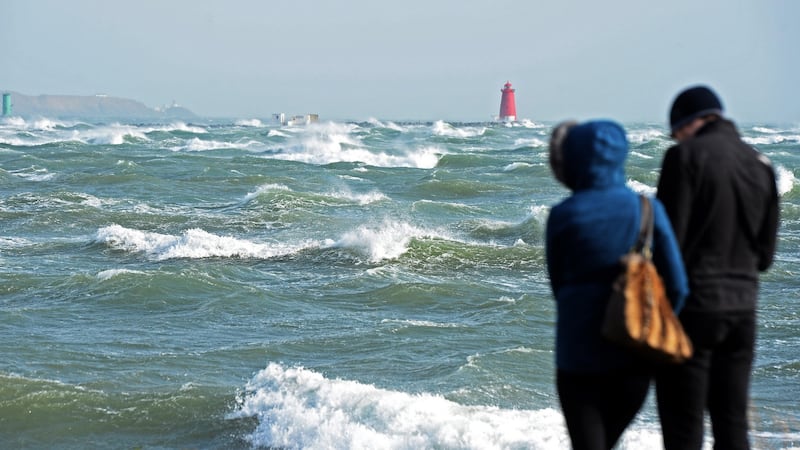Met Éireann has issued a status yellow weather warning for western coastal counties until 1pm on Tuesday with winds reaching speeds of 50-65 km/h.
Donegal, Leitrim, Mayo and Sligo can expect another morning of high winds and heavy rain with gusts of between 90-110km/h hitting the west coast early on Tuesday.
The forecaster has also issued status yellow marine gale warnings on all Irish coastal waters and on the Irish Sea, with a small craft warning also in place on all coasts.
Tuesday morning’s rain will continue throughout the day with highest temperatures reaching 8 degrees, however strong winds will make it feel colder. The early morning rain and sleet will turn into showers, becoming more prolonged across the north and west of the country.
The rain will ease on Tuesday evening and the first half of the night is due to be cold and frosty with temperatures dropping to freezing. However, most of this frost will clear later in the night as cloud increases and rain spreads across Munster.

Under Met Éireann’s weather warning categories, status yellow alerts signify weather conditions that do not pose an immediate threat to the general population but only to those exposed to risk due to their location or activity.
It follows two named storms in the past week.
Sunday’s Storm Ewan turned out to be much weaker than expected.
A status orange wind warning had anticipated gusts of up to 120km/h over the course of Sunday, but the strongest recorded was 90km/h at midday in Dublin.
Some flash flooding did occur in Clare and Galway with trees felled in Kildare, Dundalk and Cork, but conditions were nowhere near as disruptive as during Storm Doris which knocked as many as 56,000 homes off the power grid on Thursday.
Storm Doris caused travel disruption, damaged buildings and sent debris flying last week.
Storms with the potential to cause a substantial impact are named by the UK Met Office and Met Éireann, moving through the alphabet.
The first was named Abigail in November 2015, after members of the public suggested monikers for the “name our storms” project.
Forecasters are now in their second run through the alphabet.
After Ewan, Fleur and Gabriel are next on the list.
Additional reporting from PA












